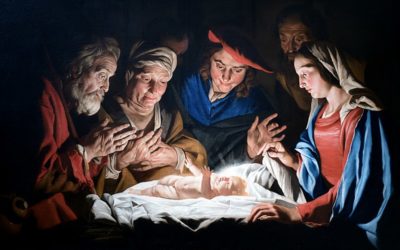After introducing section 1 of the Doctrine and Covenants in week 1, Come Follow Me goes back to the beginning of the Church’s history and takes up Joseph Smith’s account of his early religious experiences, especially his First Vision, using Joseph Smith—History 1:1–26 from the Pearl of Great Price as the main text.[i]
Before 1828, Joseph Smith was not much of a record-keeper. He was a farmer and laborer, not an author, and he did not like to write. Before the Church was organized, neither he nor his family members had a regular habit of keeping journals or other personal histories.
When Joseph Smith began a serious translation of the golden plates in 1828 with Martin Harris as his scribe, he undoubtedly encountered passages about the importance of keeping records, especially sacred records. That seems to have been his motivation for keeping the first records of his experiences, the earliest text he preserved being that of an 1828 revelation known today as Doctrine and Covenants section 3.[ii]
When the Church was organized in 1830, the first commandment given to it was to keep a record.[iii] Appointed historians or recorders began keeping minutes of Church meetings and recording revelations, but Joseph himself did not try keeping systematic personal records until 1832. In the summer of that year, he began writing a personal history.[iv] Then in November, he began writing in his first journal[v] and maintaining a letterbook to record his correspondence.[vi]
Persecution and other problems forced Joseph to put aside these historical enterprises at times, but he returned to them because of the importance of keeping a regular history. His personal histories,[vii] his journals,[viii] and his letters,[ix] along with his revelations and translations,[x] are the foundation for much of the Joseph Smith Papers project launched in 2001 that will soon be completed, providing us a wealth of information on the Prophet and his times.
Joseph Smith—History, the focus of Come Follow Me for week 2, is simply an excerpt from the first part of Joseph Smith’s largest and most influential history, which was published in Church-owned newspapers and later compiled into the History of the Church, sometimes referred to as the Documentary History of the Church.[xi] In addition to the account of the First Vision he dictated for that history, Joseph also provided accounts for other records. He also spoke about his vision, and contemporaries who heard him provided additional accounts in their journals or published sources.[xii]
The Come Follow Me manual includes a link to the Gospel Topics essay on the First Vision for those who are interested in comparing the many accounts and learning new details about this sublime experience.[xiii] At the very least, you should watch the First Vision movie prepared for the Church History Museum’s immersive theater with a 240-degree screen but more recently released for flat screens and computer monitors.[xiv] The Come Follow Me manual links to this flat-screen version, or you can access it on the Church History portion of the Church’s website.[xv] The movie version draws from all the accounts to provide a rich, visual portrayal of the First Vision. For a fuller understanding of Joseph Smith’s struggles as a teenager that led to the First Vision,
For a fuller understanding of Joseph Smith’s struggles as a teenager that led to the First Vision, listen to the first part of my October 17, 2019, BYU Idaho University Forum address entitled “Joseph Smith, Teenage Prophet,”[xvi] or see pages 1 to 43 of my book with the same title.[xvii]
[i] https://www.churchofjesuschrist.org/study/manual/come-follow-me-for-individuals-and-families-doctrine-and-covenants-2021/02?lang=eng.
[ii] https://www.josephsmithpapers.org/paper-summary/revelation-july-1828-dc-3/1#historical-intro.
[iii] D&C 21:1.
[iv] https://www.josephsmithpapers.org/paper-summary/history-circa-summer-1832/1#source-note.
[v] https://www.josephsmithpapers.org/paper-summary/journal-1832-1834/1.
[vi] https://www.josephsmithpapers.org/paper-summary/letterbook-1/1#source-note.
[vii] https://www.josephsmithpapers.org/the-papers/histories.
[viii] https://www.josephsmithpapers.org/the-papers/journals.
[ix] https://www.josephsmithpapers.org/the-papers/documents.
[x] https://www.josephsmithpapers.org/the-papers/revelations-and-translations.
[xi] https://www.josephsmithpapers.org/doc/introduction-to-history-1838-1856-manuscript-history-of-the-church.
[xii] https://www.josephsmithpapers.org/site/accounts-of-the-first-vision.
[xiii] https://www.churchofjesuschrist.org/study/manual/gospel-topics-essays/first-vision-accounts?lang=eng.
[xiv] https://history.churchofjesuschrist.org/content/museum/first-vision-theater?lang=eng.
[xv] https://history.churchofjesuschrist.org/story/first-vision?lang=eng.
[xvi] https://video.byui.edu/media/Richard+Turley+-+%22Joseph+Smith%2C+Teenage+Prophet%22/0_abrdqtf6.
[xvii] Richard E. Turley Jr., Joseph Smith: Teenage Prophet (Farmington, UT; Church History and Doctrine Publishing, 2020), 1‒43.



